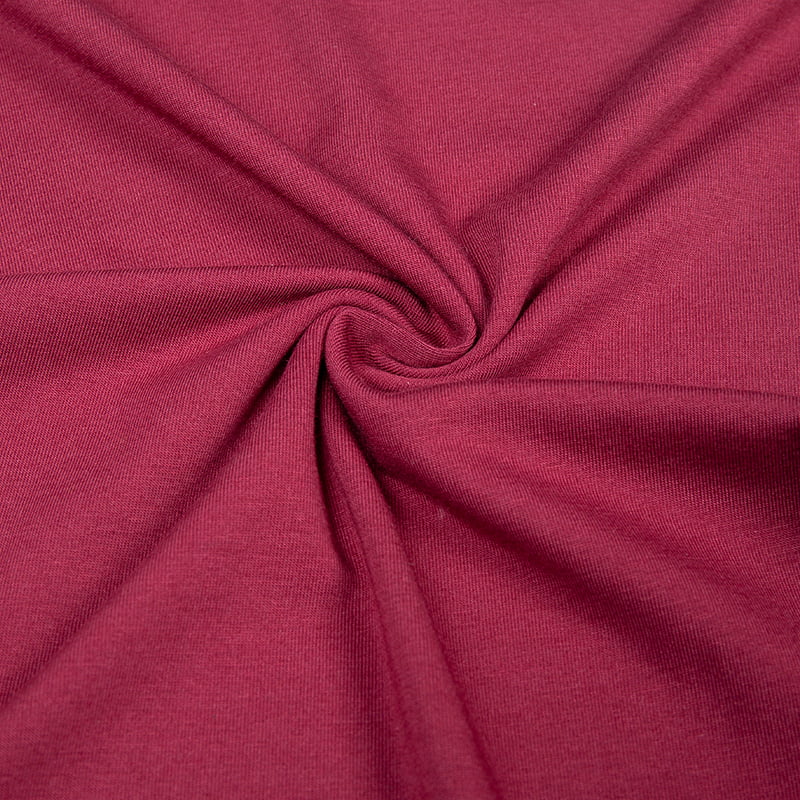
Impact of Jersey Pattern on Texture:
The jersey pattern, characterised via a unmarried-knit production with a undeniable sew, substantially influences the feel of Jersey Knitted Fabric. The texture is by and large decided by the association and look of the loops on each facets of the material.
Smooth Surface Texture:
The jersey pattern results in a smooth and flat surface on one side of the fabric. This smoothness is achieved through the continuous "V" shaped loops formed by the plain stitch. The fabric's smooth texture against the skin contributes to its comfort, making it suitable for various apparel applications.
Loopy Texture at the Reverse Side:
On the opposite aspect, the jersey sample typically shows a sequence of loops, developing a barely crazy texture. This loopiness is a feature feature of the obvious stitch, including a diffused textural detail to the cloth. While this facet isn't always generally meant to be the outward-dealing with facet, variations in yarn and finishing techniques can have an impact on its look.
Changes in Texture via Different Yarns:
The preference of yarns used in Jersey Knitted Fabric appreciably influences its texture. Different yarns deliver unique traits to the fabric, influencing its sense and look.
Cotton Yarns for Softness:
The use of superb cotton yarns enhances the softness of Jersey Knitted Fabric. Cotton contributes a natural, breathable sense to the cloth and complements the clean surface texture of the jersey sample.
Modal or Bamboo Blends for Silky Texture:
Blending jersey knit with fibers like modal or bamboo can introduce a silky texture. These fibers enhance the drape of the material, supplying a costly experience. The jersey pattern incorporates these fibers nicely, keeping a stability between stretch and a polished texture.
Polyester Blends for Durability:
Incorporating polyester yarns into the jersey knit can beautify the material's durability. Polyester provides strength and resilience, contributing to a texture that withstands frequent wear and washing even as retaining its smooth surface.
Changes in Texture through Finishing Techniques:
Finishing strategies play a important role in refining the feel of Jersey Knitted Fabric, offering precise characteristics to meet design and luxury necessities.
Brushing for Softness:
Brushing the fabric surface can create a softer texture by way of elevating the fibers. This approach is often used to decorate the cloth's coziness, making it appropriate for loungewear and informal clothes.

Sanding for a Sueded Finish:
Sueding or sanding the material can create a suede-like texture on the surface. This method modifies the arrival of the jersey pattern, adding a subtle texture that mimics the feel of suede.
Embossing for Texture Variation:
Embossing includes urgent the fabric with raised patterns. While not changing the jersey pattern itself, embossing introduces extra texture, offering a tactile element to the cloth's surface.
Changes in texture can be executed through the selection of various yarns, with alternatives like cotton for softness, modal or bamboo for a silky sense, and polyester for durability. Additionally, completing strategies together with brushing, sanding, and embossing can similarly decorate or vary the fabric's texture, offering designers and producers with alternatives to satisfy unique aesthetic and comfort alternatives.


 English
English 中文简体
中文简体











